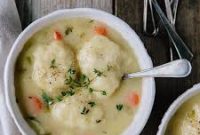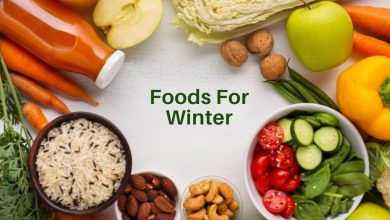Introduction:
With its brisk breezes and landscapes dusted with frost, winter welcomes a season of coziness and warmth, enhanced by the delectable assortment of winter fare that adorns our tables as well as warm blankets and blazing fireplaces. This essay explores the varied and wholesome meals that provide warmth and happiness throughout the coldest months of the year, delving into the complex tapestry of winter cuisine.
Seasonal Produce and the Winter Pantry
The emphasis on seasonal products is one of the characteristics that set winter cuisine apart. Harvested in the fall and growing throughout the winter, root vegetables such as turnips, parsnips, and carrots provide a robust base for a variety of winter recipes. Brussels sprouts, kale, and cauliflower are prime examples of cruciferous vegetables that are abundant in vital nutrients and flavor. With their vivid taste and high vitamin C content, citrus fruits can bring a burst of freshness to winter dishes when they are in season.
A wide range of nuts and seeds, legumes, and sturdy grains are common winter pantry mainstays. These components provide dishes that fend off the winter chill a gratifying depth and texture in addition to adding to the nutritious content of winter meals.
Comforting Soups and Stews
There’s nothing quite as cozy as a hot cup of soup or stew when the weather drops. A combination of fresh vegetables, slow-cooked meats, and flavorful herbs and spices are frequently found in winter soups. In addition to being comforting, comfort food favorites like creamy butternut squash soup, robust vegetable stew, and chicken noodle soup also include vital nutrients that help ward off the wintertime blues.
Perfectly cooked stews highlight the variety of winter ingredients. A delectable masterpiece of beef bourguignon, a French classic, blends tender meat, red wine, and root vegetables. A popular dish in many homes, chili provides a substantial and nourishing supper for chilly winter nights with a burst of spice. It also contains a robust mixture of ground beef and beans.
Roasts and Braises: Celebrating Winter Meats
Hearty meats that are perfectly slow-roasted or braised are a hallmark of winter cuisine. Succulent flesh and crispy skin make roast chicken a mainstay on winter dinner tables. As they simmer slowly and gently, fragrant herbs and spices that are used to season pork roasts fill homes with delicious fragrances.
Winter cuisine is known for its braises, which are made by searing meat and then boiling it in broth until it becomes soft. The technique of winter braising is best demonstrated by dishes like pot roast, which has fork-tender meat and flavorful vegetables, and osso buco, a Milanese delicacy of braised veal shanks.


Winter Comfort: Casseroles and Baked Delights
During the winter, casseroles and baked meals are popular because they provide the ideal balance of comfort and ease. Warming to the body and the soul, shepherd’s pie is a layered dish of minced beef and vegetables topped with creamy mashed potatoes. With its layers of ricotta, meat sauce, melted cheese, and noodles, lasagna quickly becomes a family favorite.
Another essential component of winter pleasure is baked sweets. Pies made with apples and pumpkin that are spiced with nutmeg and cinnamon bring forth the festive mood. Warm bread puddings with caramel sauce on top make a rich and fulfilling end to winter dinners.
Embracing Winter Greens and Citrus
Winter delivers a chill to the air, but it also provides an abundance of citrus fruits and verdant greens. Swiss chard and other dark, leafy greens, like kale, do well in colder climates and provide nourishment to winter meals. When combined with seasonal fruits, nuts, and seeds, these winter greens make for a refreshing salad that contrasts well with heartier winter meals.
Citrus fruits, such oranges, grapefruits, and clementines, provide winter recipes a vitamin C boost in addition to a splash of color. Citrus fruit segments are a common addition to winter salads, helping to counterbalance the richness of other winter elements.
International Influences on Winter Cuisine
Winter meals are not limited to a particular cultural heritage; rather, they are found all across the world and represent the many culinary customs of various locales. During the lengthy winter months, Scandinavians rely on robust cuisine like Swedish meatballs and lutefisk, which is dried fish reconstituted in a lye solution. Wintertime in Italy is celebrated with hearty minestrone soup and risotto with mushrooms.
Indian food welcomes winter with hearty tastes and comforting spices. Recipes like mustard greens curry (sarson da saag) and carrot pudding (gajar ka halwa) highlight the richness of winter crops when paired with traditional spices.


Conclusion:
Winter cuisine offers a satisfying and enjoyable eating experience because of its focus on fresh fruit, cozy tastes, and substantial textures. Winter food celebrates the wealth of the season and the social gathering around the hearth. It features everything from hot bowls of soup to slow-cooked roasts and decadent sweets. Let the varied and delicious world of winter delicacies warm our bodies and souls as we welcome the chill, establishing enduring customs and memories that will get us through the year’s harshest months.




